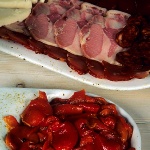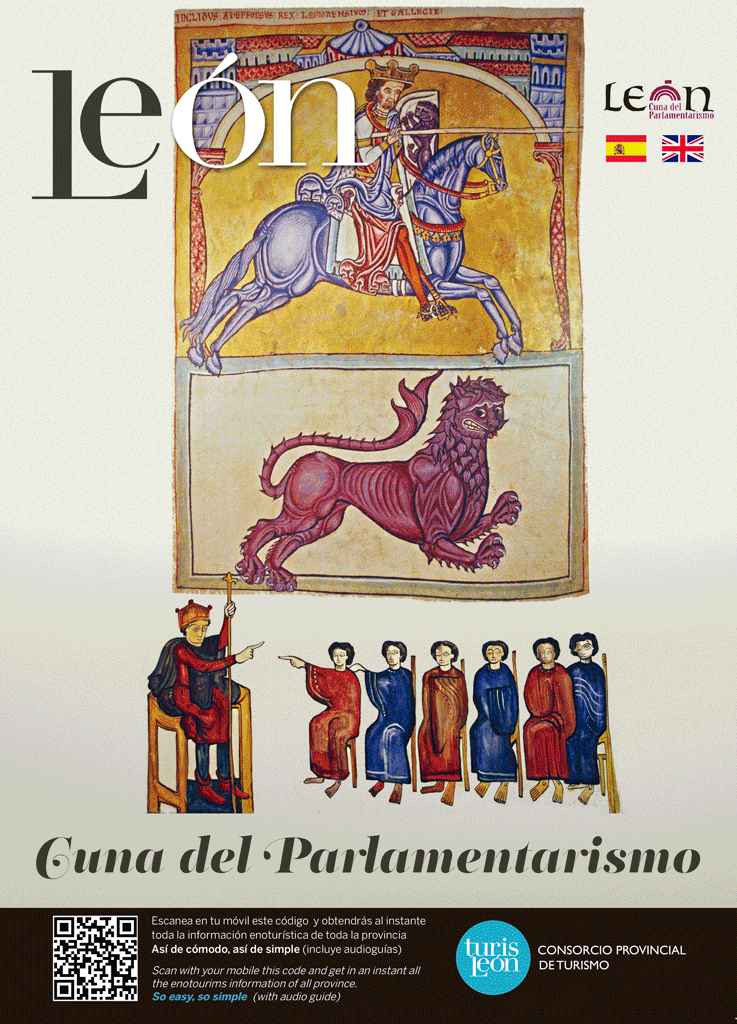EMBUTIDOS (COLD CUTS)
Cured Meats
The great star of Leonese cold cuts is the cecina. In the outside it has brown hues, but cherry tones inside. Smooth and lightly salted, beef cecina from León has a unique aroma, typical from artisan smoking process.
The botillo berciano is the quintessential meal of El Bierzo, the western region of the province of León. It is elaborated with meat from the cutting of pork pieces, especially ribs and tail. These pieces are cut up and marinade in salt, paprika, garlic and other natural spices. They are then stuffed in the pig’s intestines, smoked and semi-matured. The term botillo comes from Latin “botellus”, with the meaning of “intestine”, i.e. the pig’s intestine where the botillo “se embute” (is stuffed). It is usually cooked when eaten.
Chorizo
The harsh climate of the province contributes to the great quality of its chorizos (which are pork, cold-cut sausages). As it occurs with the morcilla, the mountainous North of León yields large amounts of this cold cut, although it can also be found in El Bierzo, Astorga and La Bañeza. The chorizo is cured in the cold weather, aired out and exposed to smoke. This maturing process gives it a special aroma that is the perfect fit for its spicy flavor. The way it is presented, with a round shape called corra, is also a hallmark to distinguish Leonese cold cuts.
Morcilla
The morcilla from León has its own characteristics that distinguish it from similar Spanish products. To start, its only ingredients are pork’s blood and onion, unlike other morcillas, which also include pine nuts or rice. The ingredients are stuffed in natural intestines, presented as a string, and dried out outside or with smoke. The province, especially the mountain areas, has the right climate for making morcilla (dry and cold), so that the curing process yields the best quality to these cold cuts.
Did you know?
The Slaughtering
The slaughtering of the pig is one of the most settled culinary and festive traditions in the province, whereby families had food supplies for the whole year. The San Isidore’s Romanesque Calendar from the 12th century shows the month of November (month of the slaughtering or Saint Martin’s), with the painted figure of a man holding on to a pig he is about to sacrifice.

